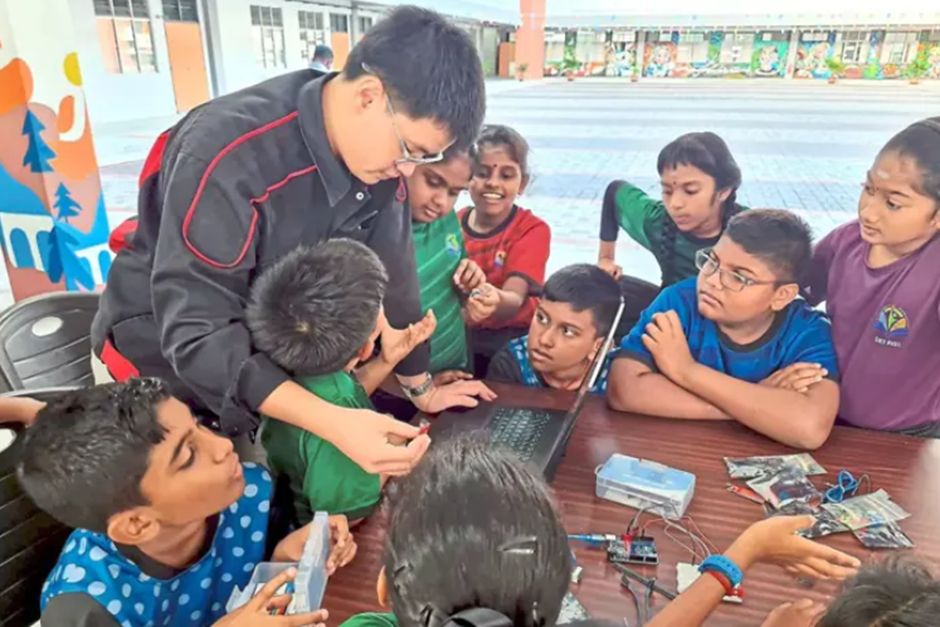An Innovative Robotic Exosuit Boosts Both Walking And Running
- Automate Asia Magazine

- Oct 9, 2019
- 4 min read
The soft wearable could prove useful for military applications, emergencies and medical rehabilitation
A pair of fitted shorts may not look much like the high-tech robotic exoskeletons of Hollywood films. But this seemingly simple device, which tugs on the wearer’s legs with each step, probably represents the first exosuit capable of significantly assisting humans in both walking and running.

Until recently, no exosuit design had succeeded in reducing the amount of energy required for both types of motion. Earlier generations of such suits, also known as wearable robots, had stumbled in that challenge because of the different biomechanical actions required for walking versus running. Now researchers have developed a soft device that can automatically detect whether the wearer is walking or running and provide the appropriate assistance for either movement.
“After wearing the system for 15 minutes or so, you start to question if it’s really helping at all, because you just feel like you’re walking,” says David Perry, a robotics engineer at the Wyss Institute for Biologically Inspired Engineering at Harvard University. “Once you shut it off, however, your legs suddenly feel heavy, and you realize how much it was helping. It’s a lot like stepping off the end of one of those moving sidewalks at the airport.”
To quantify the difference between moving with pure leg power and using robotic assistance, the researchers put wearers on a treadmill and calculated how much oxygen they consumed while breathing, a measure known as metabolic cost. The exosuit showed it could reduce the metabolic costs of walking by 9 percent and of running by 4 percent. Such effects, the researchers say, are equivalent to feeling 16.3 pounds lighter while walking and 12.6 pounds lighter while running. That result could benefit anyone who needs to travel quickly across long distances on foot: rescue workers searching a large disaster area, U.S. Army soldiers or Marines on the march, or even hikers out for fun. It could also provide steady medical assistance to people with illnesses or injuries that restrict walking.
Perry and his colleagues detailed their prototype in a paper published this week in Science. The wearable robot relies on soft textile materials and weighs just 11 pounds—a relatively low weight that helps reduce the metabolic cost of running with an extra load. Electric motors worn on the lower back apply force to cables connected to soft leg wraps worn around the thigh of each leg. A battery strapped around the waist provides enough power to help the wearer cover about five miles between charges.
Previous studies have tested portable hip- and ankle-assist devices, finding the latter can help with walking and the former can do so with either walking or running. But the scientists who developed the new exosuit say no individual apparatus until this one has demonstrated the ability to aid both types of motion. “This study builds upon the research team’s prior success in developing ankle-assist devices by showing benefits can also be achieved through hip assistance,” says Karl Zelik, an assistant professor of mechanical engineering at Vanderbilt University and chief scientific officer at HeroWear, a company that is currently developing lift-assist exosuits. As an expert who did not participate in the recent study, he described its results as “promising.”
To help the exosuit automatically switch between walking and running modes, the team installed sensors capable of measuring force and angular motion. It trained a control algorithm to detect walking and running patterns, based on feedback from these sensors. The algorithm eventually learned to tell the difference between how the human body’s center of mass moves while walking—in which it acts like an “inverted pendulum,” where the hip swings over the planted foot with each forward step—and while running—in which it does so like a “spring-mass” system, where each leg bounces in the manner of a spring attached to the hip.
Beyond the main treadmill experiments, which took place at a minimal incline and constant speed, one male study participant performed additional treadmill testing that mimicked more realistic conditions. The results suggest that the exosuit also helps with uphill walking and with running at varying speeds on a flat surface, says Philippe Malcolm, an assistant professor of biomechanics at the University of Nebraska Omaha and a co-author on the study. “The exciting progress we have made and results we see in this study set up other studies where we can evaluate the device in other outdoor environments, such as hilly and mountainous terrain,” Malcolm says.
Much original funding for the exosuit came from the U.S. Defense Advanced Research Projects Agency, through its Warrior Web program, which is aimed at lightening the load for U.S. troops during marches or foot patrols. Because most American soldiers are male, the system’s early design and testing centered on the body shapes of men. But the researchers have been developing new versions of the exosuit for women and a broader range of possible wearers, such as those with a variety of disabilities.
Perry and his Harvard colleagues have filed patents on exosuit components and established a licensing agreement with ReWalk Robotics, a medical device company focused on bionic systems. The company has already released one commercial ankle device to help rehabilitate stroke patients and is exploring medical applications based on the hip exosuit system. The researchers are also developing a new version of the exosuit that will weigh 60 percent as much as the current model and will tailor its assistance to best fit each individual wearer’s shape and gait.
Personalized gait assistance is particularly difficult in the case of stroke patients or elderly people, who walk and run in less steady and predictable patterns, says José Pons, scientific chair for the Legs + Walking Lab at Shirley Ryan AbilityLab, a translational research hospital in Chicago. He was not involved in the new research but did write an opinion article on the study in the same issue of Science. Even the gait-detecting algorithms in advanced exosuits such as this one may find it challenging to detect when less predictable movement is about to shift. “Ideally, the movement intent should be detected before the movement is actually executed so that assistance can be synchronized to the desired movement,” Pons says. “Otherwise, the assistance could be felt as opposing the movement rather than assisting it.”
In his opinion article, Pons suggested that instead of relying on algorithms, future exosuits will need new neural interfaces to directly detect human intentions through nervous-system signals. Technology like that, he says, could help exosuits take their next big step forward.
Source: www.scientificamerican.com





-01.jpg)


